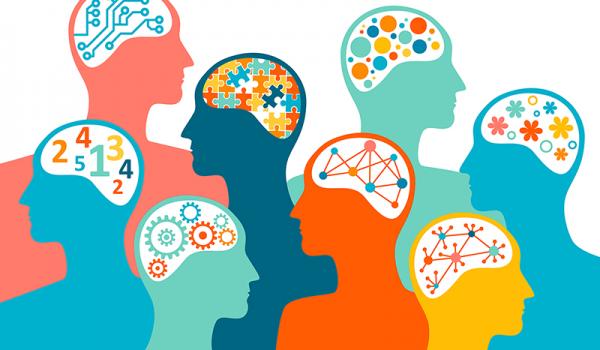
The human population is inherently mentally diverse, with every individual creating and processing differently. While society has historically stigmatized these differences as disadvantageous, the concept of “neurodiversity” seeks to reframe the societal perception of mental diversity.
According to an article in Harvard Health Publishing, neurodiversity refers to “the idea that people experience and interact with the world around them” differently; “there is no one ‘right’ way of thinking, learning and behaving, and differences are not viewed as deficits.”
In an idealized neurodiverse society, both neurotypical and neurodiverse individuals (those with autism, ADHD, learning disabilities, and other mental differences) are equally valued. They accommodate and appreciate each other’s unique thought processes, contributions, and interactions with the world.
Unfortunately, our current society values the neurotypical population as the ideal and attempts to assimilate neurodiverse individuals to this standard. These individuals must often adapt their lifestyles to learn how to be successful in neurotypical environments. They are expected to do extra work to “fit in” (in classrooms, workplaces, public spaces, etc).
However, with society placing these lifestyle expectations on neurodiverse individuals, it is worth asking—what lifestyle responsibilities should be placed on society? How might neurotypical mainstream culture change its perception to better embrace neurodiversity? And how might society benefit through neurodiversity, perhaps even depending on it for future progression?
Based on research and insight from my neurodiverse family members, here are some starting-point lifestyle tips for embracing a neurodiverse society:
- Recognize the individual agency of all people, no matter their mental diversity. – Individual agency is important in any human interaction. It is always best to take cues from an individual on what they are comfortable with, how they prefer to communicate, etc. – In some neurodiverse interactions (i.e., when interacting with a neurodiverse child), the family members, guardians, and/or trusted companions may provide guidance on an individual’s preferences and comfort levels.
- Listen to neurodiverse voices (in whatever form). – Neurodiverse interactions are often misunderstood as one-sided. This stems from the prejudiced belief that only neurotypical people have something to contribute in interactions with others. This is simply untrue! – The neurotypical community has so much to learn from neurodiverse individuals, and their unique contributions are a true asset to society. – Some neurodiverse individuals may be nonverbal, but this does not mean they are not communicative. There are many forms of expression beyond verbal words, and each is equally invaluable.
- Support neurodiverse businesses and representation. – Representation in popular culture, media, and business supports the autonomy of neurodiverse individuals and encourages a better understanding of neurodiverse experiences.
- Create neurodiverse spaces. – When shaping environments (in the community, workplaces, school, etc.), maintain a mindset of accommodation. Even simple additions like fidget tools, moveable chairs, and quiet corners can be comforting for some neurodiverse individuals (especially in an overstimulating setting).
The progression towards a flourishing, neurodiverse society begins within individual lifestyles. By committing to these small suggestions, and maintaining a growth mindset to learn about more, we work toward collectively embracing neurodiversity and thus benefiting society as a whole.
